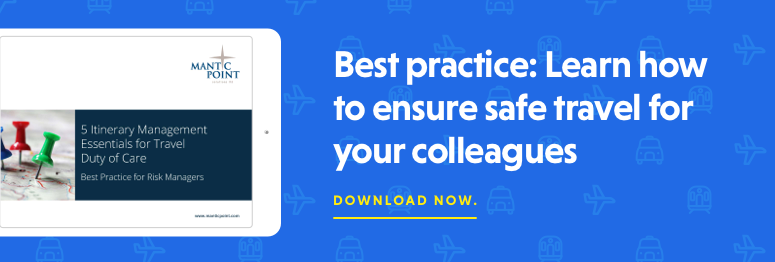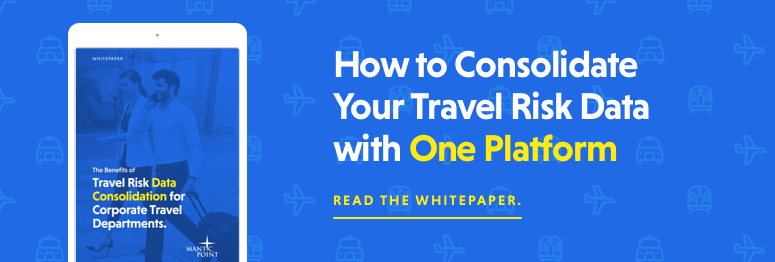Why every large company needs a travel risk strategy
Posted by Mike Atherton on 04 June, 2015

Does your organisation prepare for unplanned incidents that could affect your traveling staff? Does your organisation have a strategy in place to manage travel risk? If not here's why organizations need to mitigate corporate travel risks.
Until Dutch explorer Willem de Vlamingh discovered black swans in Western Australia in 1697, all swans were white and no one thought otherwise. Using this as a metaphor in his book, The Black Swan, renowned author, statistician and risk analyst Nassim Nicholas Taleb argues we should be better prepared for unexpected life- or perception-changing events, whether geographic, social, political or even financial.
Terrorist attacks such as 9/11 and 7/7; the social and political upheaval that defined The Arab Spring; or unexpected natural disasters like the Japanese Tsunami or Nepal earthquakes … these are the sort of events that impact seriously and suddenly on companies with staff on the ground and at risk in affected areas.
What plans do you have to deal appropriately with such eventualities?
Taleb advocates what he calls a "black swan robust" society, meaning a society that can withstand difficult-to-predict events. At Mantic Point we believe in black swan robust corporate travel.
As a business expands into established or emerging markets, employees inevitably have to travel to hostile or unfamiliar environments. The increasing operational complexity that this entails becomes one of the key challenges for management, and emergency response planning is an important part of that.
To make the topic as accessible and easily digestible as possible, we have written a short, comprehensive e-book that no corporate travel buyer can afford to ignore (see below). It outlines the essentials of effective emergency response planning.
Only by having the right systems, processes and partnerships in place can you be sure of optimizing your response in moments of crisis.
Key considerations in emergency response planning
- Plan in partnership. Don’t go it alone. It’s vital to work with your TMC, systems or security provider to formalize an emergency response plan.
- Make people aware. Take pains to communicate your travel risk policy widely throughout your organization and integrate it with your overall travel policy.
- Brief travelers. Ensuring travelers have the right information such as relevant risks and company procedures before they travel will put them at ease and make emergency situations easier to handle.
- Reliable tracking of your travelers location. This means knowing where your people actually are as opposed to where they should be. Making full use of the most effective technology is an essential part of a travel risk strategy.
- Crisis communication. Communicating clearly and authoritatively to the right people at the right time goes a long way to dissipating stress in moments of crisis and promotes a calm, rational response.
- Post event review. When an emergency arises, speed, efficiency and the successful outcome for travelers and the business are paramount. In the aftermath it’s essential to review the performance of the team, partners and technology and learn valuable lessons. These should be fed-back into the strategy and planning process.


